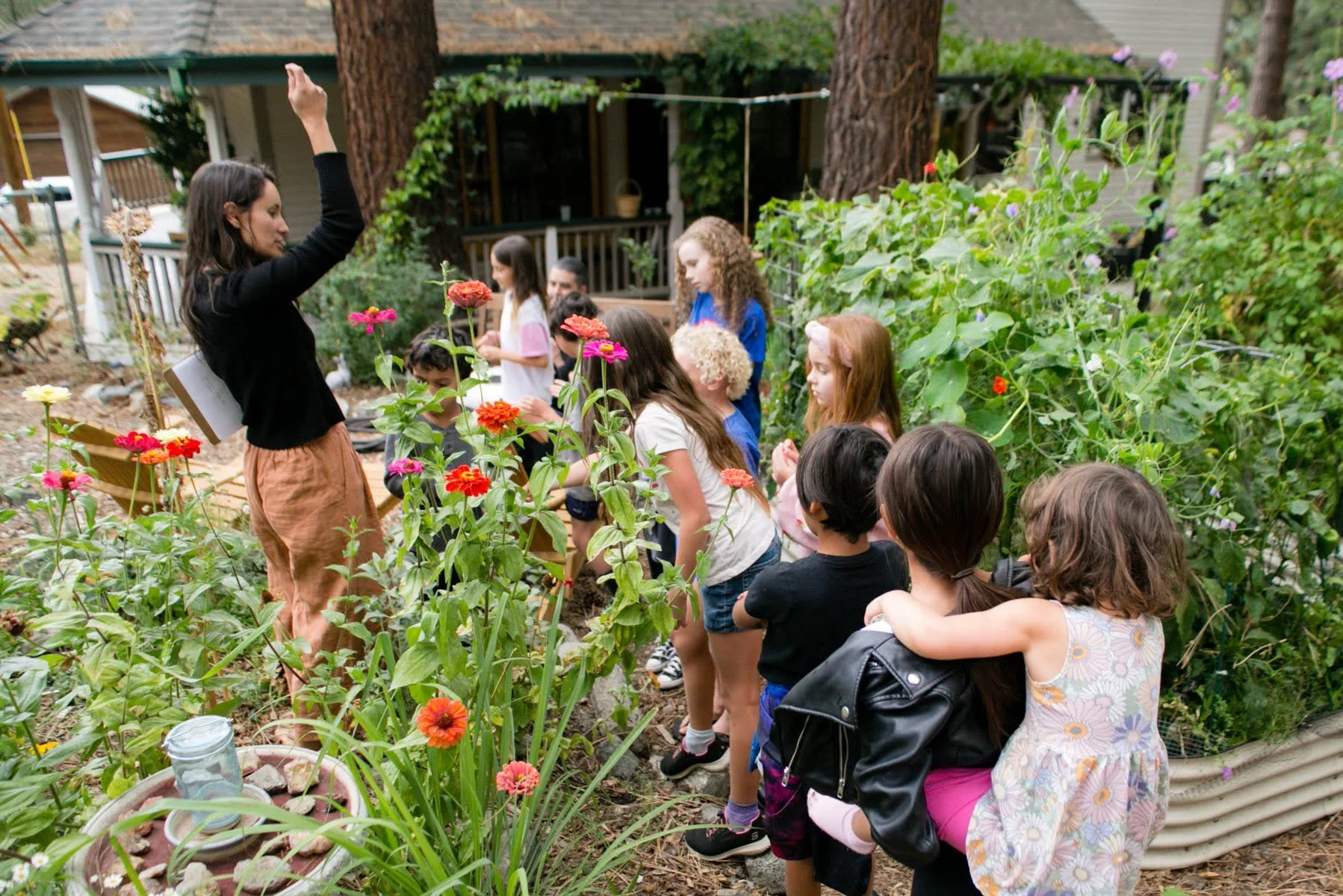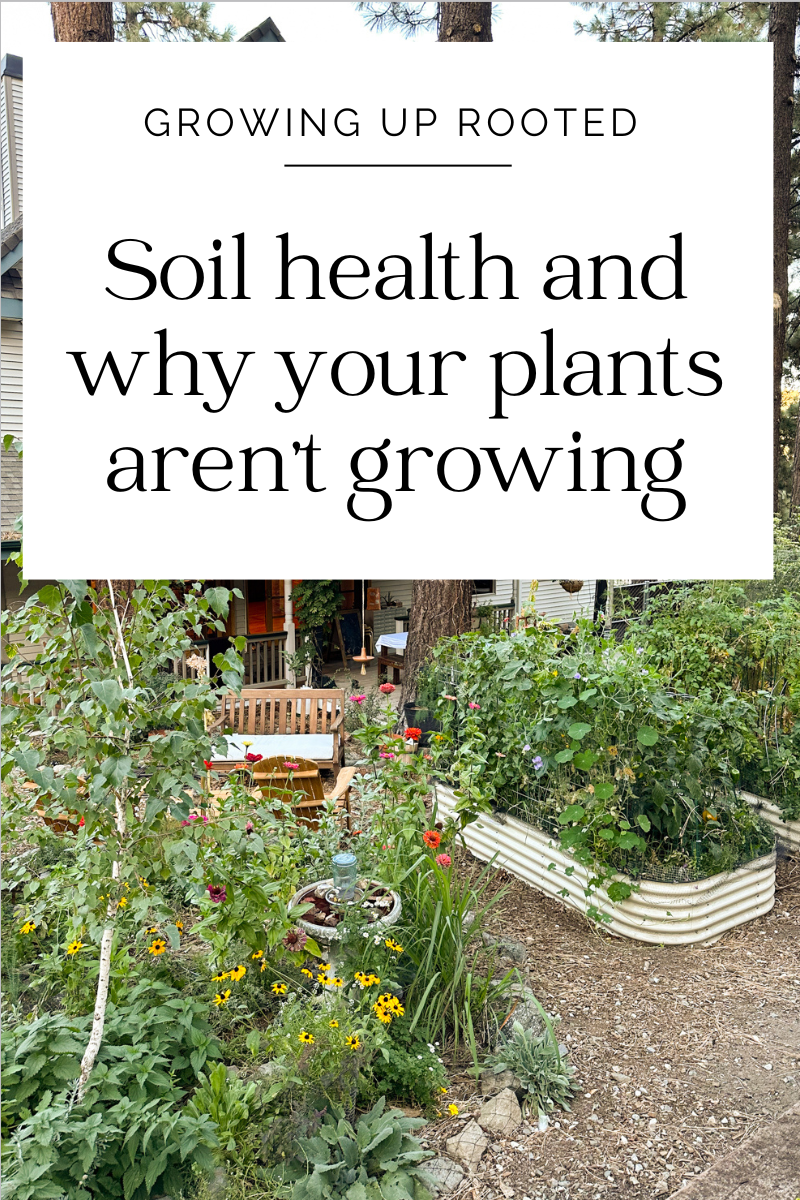Soil health and why your plants aren’t growing
Why are my plants not growing? I hear this question a lot. And assuming your plants are getting enough water and sunlight, chances are good the answer to your questions is in the quality of your soil.
This is the part 2 of the Starting a Garden Series. Read along to start your gardening journey with important practical information. At the end of the day, you will do gardening your way, but knowing some basics will set you up for success.
Also on this series:
1. Want to start gardening? Here’s how.
3. How to start seeds indoors for your garden
Soil health is a critical component of successful gardening, as it provides the foundation for plant growth and health. A healthy soil ecosystem is composed of a complex mix of organic matter, minerals, water, air, and microorganisms that work together to support plant life. Healthy soil is something every gardener needs to invest in as it is the foundation of the garden. Whatever your current soil is, it can be amended, and below I break down how.
Our backyard was sandy rocky mountain soil when we arrived. It was eroded and infertile and you couldn’t even find weeds. Slowly through the years we have brought in compost, plants and mulch to bring this piece of land to life.
Our backyard spring 2022, all covered in mulch and beginning to wake up.
Why is soil health important?
The difference between a garden that thrives with abundance and one that looks stunted and weak is often the quality of its soil. A healthy soil will not only provide plants with the necessary nutrients. It will also absorb enough water to make it available as plants need it and let enough air flow for the roots to thrive. This will make for healthier plants that are better able to resist diseases, pests, and environmental stressors, leading to higher yields and better overall garden performance.
Students at Nature School learning about soil health.
Students sowing seeds on amended soil in the ground.
What factors contribute to poor soil health?
There are several factors that can contribute to poor soil health, including:
1. Overuse of chemical products
Chemical fertilizers can disrupt the natural balance of soil microorganisms, leading to poor soil health. Other chemicals like weed killers don’t know the difference between a plant and a weed, killing anything, including the microorganisms essential for healthy soil. It’s also fair to mention that those plants we call weeds are often the most wise medicinal plants, and that they are also the most resilient to whatever environment they grow in … so how beautiful to see them as garden allies when possible and let them grow and heal the garden and our people.
2. Soil compaction
Soil that is frequently walked on or driven over can become too compacted, reducing air and water flow and making it difficult for plants to take root. I’ll make a note that I sometimes walk over my raised beds to reach something without problems, there’s always a balance.
3. Lack of organic matter
Soils that lack a layer of organic matter, such as compost, leaves and other mulch, usually have poor structure, which can lead to water logging, erosion, and nutrient deficiencies. Think about that top layer of mulch like the food that feeds the soil. The leaves that fall from the trees, the small insects that die and the pine needles, all make up a layer of food for the fungi, earthworms and microorganisms that live under the soil line. They will break this food down into smaller parts (nutrients) that the plants are then able to absorb. Think of earthworms eating decomposing food and plant material and releasing (pooping) worm castings filled with nitrogen and minerals for the plants to grow.
4. Lack of diversity
Soils that lack a diverse range of plants and microorganisms are less resilient to environmental stressors and may not be able to support plant life as effectively. Think first before wanting to use any kind of natural or synthetic insectiside on your plants. There is a balance in nature that we often break with good intentions, causing more harm than good. Insecticides are poison that doesn’t only kill your targeted bug nuisance, but everything else that comes in contact with it. A soil poor of life is a poor soil.
5. Contamination
Soils that have been contaminated with pollutants such as heavy metals, chemicals, and petroleum products can be toxic to plants and soil microorganisms. If you live in heavy urban land, you may want to have your soil professionally tested for pollutants. You can search online for a lab in your area, Wallace Labs serves Southern California and Perry Lab serves Northern California. This way you know if there’s any chemicals that may leach into the food you eat. In extreme cases, it’s worth considering hiring a professional to eliminate the polluted soil and replace it with clean healthy soil.
Students at Nature School observing the herb garden in full late summer bloom.
How to amend your soil
You can start by looking at your current soil closely. You could purchase a soil test kit online to have it professionally tested for nutrients and deficiencies, but I don’t think this is a must. As you dig a bit and look at it, what do you see? Is it mostly sand or clay? You will want to strike a balance to create a soil that drains well, holds moisture and is well balanced with nutrients for your plants.
Sandy soils don’t hold moisture, so you’ll want to add some moisture retaining materials like coconut coir, vermiculite and compost to improve both it’s structure and water retention ability. Clay holds too much water and doesn’t let air flow easily, so you’ll need to mix in materials like sand, gypsun, pine bark and of course again, compost to help improve it’s structure and drainage. A visit to your local nursery might be all you need as they will sell prepackaged mixes specifically formulated to amend the soils in your area.
Aside from that, here are several steps you can take to improve the health of your soil:
1. Add organic matter
Adding compost, mulch, or other organic matter to your soil can help improve soil structure, increase water-holding capacity, and support the growth of beneficial microorganisms. Compost is a decomposed pile that can be made from grass clippings, leaf mold, manure, food waste, and other similar products. The mix of these ingredients makes for a nutrient filled pile of soil amendment. I wholeheartedly recommend you start a compost pile if you have the space and haven’t already. I find it so rewarding to feed that pile my kitchen scraps instead of throwing them in the trash.
Here are some easy ways to add organic matter to your garden by type of container:
For pots, a good quality organic potting soil is all you need. Every year, replace at least half of the soil in the pots with new soil to replenish it’s structure.
For new raised beds, I like to fill them with kitchen scraps, twigs, small branches and leafs half way through and then fill the rest with good quality organic potting or raised bed soil. Every year, the soil level will drop and I will amend with compost, composted manure, and worm castings.
In-ground garden beds can be started by mixing in a layer of compost to the first few inches of your ground soil and planting a cover crop to add nourishment to the soil. Once it’s grown, chop the plants and leave them in place. Add a heavy layer of mature compost, composted manure and worm castings over it and start your garden.
More about cover crops in part 5. What are cover crops and why you need them.
For an easy way to add organic matter to your in-ground garden beds and raised beds, you can dig a whole in the ground around your plants and burry small amounts of your kitchen scraps. It will take time for the bugs and microorganisms to eat through your piles so don’t over-burry, but you will be skipping a step and adding nutrients to your garden year-round. This doesn’t work well in planters as there usually isn’t enough life in the soil to break down the food you burry.
More about composting in part 4. How to start composting at home.
Students at Nature School observing the compost bin. This is where we produce the compost that will later be spread over raised beds and around fruit trees.
2. Minimize soil disturbance
Too much tillage can lead to soil compaction and erosion. As you plan to amend your garden beds after a growing season, think about adding a layer of nourishment above for next year, while leaving the current soil as undisturbed as possible. This is because there is a complex web of life under the soil line that gets affected by the tillage or turning of it.
Try to use gentle methods of soil cultivation, such as hand digging or using a digging fork to reduce your effect in the life systems under the soil. I like to remove old wasted plants by cutting them at the soil line and leaving the root where it sits to feed the soil.
3. Use cover crops
Cover crops, such as clover, legumes, and winter rye, can help add organic matter to your soil and improve soil structure. You can sow cover crop seeds in the fall when your growing season is coming to an end and let it grow and cover the ground during the winter. Then come spring, chop it (if it’s not already dead) and amend your beds over it allowing all the nourishment of these crops to stay in the soil.
More about cover crops in part 5. What are cover crops and why you need them.
4. Add minerals
Soils that are low in essential minerals, such as nitrogen, phosphorus, calcium and magnesium, can benefit from the addition of rock dust or other organic mineral supplements and fertilizers. Keep in mind that if you are investing in adding healthy compost to your soil every year, you are likely covering your mineral basis and won’t need any amendments. Regardless, I like to sprinkle some organic fertilizer around heavy eaters like tomatoes and eggplants, to make sure they get everything they need all growing season. An easy choice is Down to Earth Organic All Purpose Fertilizer.
5. Avoid chemical fertilizers
Instead of relying on chemical synthetic fertilizers, choose organic fertilizers, such as compost tea or worm castings to provide plants with the nutrients they need.
Soil health is a critical component of successful gardening, and I’ve shared some simple ways to improve the health of yours. By adding organic matter, minimizing tillage, using cover crops, and avoiding chemical fertilizers, you can create a healthy soil ecosystem that supports plant growth and health. With a little effort, gardeners can enjoy the benefits of a thriving, productive garden for years to come.
Happy amending!
This article has affiliate links from Amazon.







